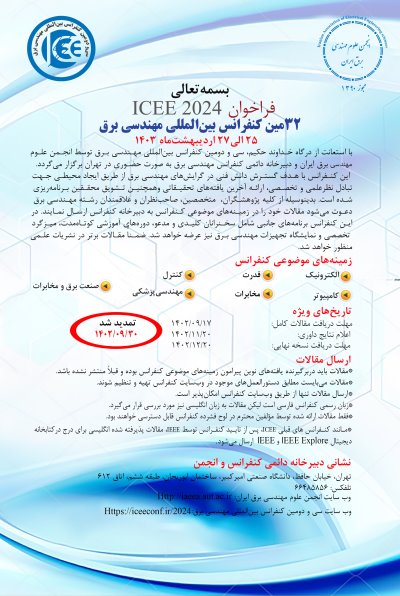0% Complete

نویسندگان :
کلمات کلیدی :
چکیده :
لیست مقالات بایگانی شده
Fatemeh Feizi - Amirhossein Hossein Nia - MohammadMahdi Hemmatyar - Fatemeh Rahimi - Farhoud Jafari Kaleibar
Reza Rezaei - Seyed Reza Mousavi Aghdam
Zeinab Maroufi - Alireza Hadi Hosseinabadi - Reza Askari moghadam
Mohammad Hasan Rezaei - Mohammad Hasan Yavari
Mahdis Saghaee Jahed - Meysam Ghanbari - Seyed Mohammad Sajad Sadough
آرمین باقری - محمد حائری
Mohammad Yousef Darmani - Shiva Karimi
Seyyed Hadi Mousavi - Varahram Janatifar - Arya Abdolahi - Mitra Sarhangzadeh
Ali Beheshtikhoo - Mahdi Pourgholi - Iman Khazaee
Reihaneh Yourdkhani - Arash Tavoosian - Navid Asadi Khomami - Mehdi Tale Masouleh




